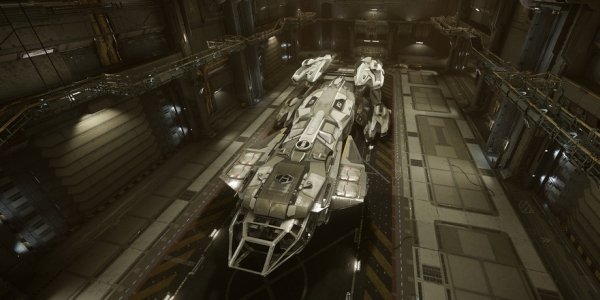Star Citizen Developer Has Responded To Crytek Lawsuit

Cloud Imperium Games has responded to the lawsuit initiated by Crytek against Roberts Space Industries and Cloud Imperium Games regarding Star Citizen and Squadron 42, the crowdfunded space simulators that were running on the CryEngine.
According to the legal documents made available on PacerMonitor, Cloud Imperium Games offered rebuttals and the public display of the Game License Agreement that was signed between CIG and Crytek.
Cloud Imperium Games goes through a list of the issues that Crytek brought up in the motion to sue over Star Citizen, including that Crytek claimed that CIG only signed the Game License Agreement for one game, Star Citizen, and not for the second game, Squadron 42. However, in displaying the GLA, it's revealed that the agreement was signed to use the CryEngine for both Star Citizen and Squadron 42.
While that might seem like it would instantly null and void the lawsuit from Crytek, there are a number of other issues brought up and addressed as well, along with some that aren't. For instance, Crytek claimed that Cloud Imperium Games shared code with Faceware Technology for the inclusion of the Faceware tech into Star Citizen. Cloud Imperium Games doesn't address that particular claim, but some people are saying that the developers may be exempt from this particular point because the Faceware support might be built in based on the Lumberyard source that CIG switched over to.
And regarding the Lumberyard situation... Crytek attempted to state that Cloud Imperium Games were supposed to exclusively use the CryEngine to build Star Citizen. However, the CIG lawyers pointed out that the GLA actually stated that the company had exclusive rights to use CryEngine and not that the studio was beholden to only exclusively using the CryEngine. That's not to mention that many of the engineers working on Star Citizen had to completely gut aspects of the engine and rewrite a lot of code from scratch to accommodate what Chris Roberts required in order to turn the game into what he had envisioned.
All new modules had to be created for the procedural galaxy generation, along with work being done in collaboration with NASA astrophysicists in order to get the solar system scale, planetary gravitational pull, and planet-side atmospheres correct. None of those features were built natively into the CryEngine, and the team had to leverage Amazon's Lumberyard in order to hook all of these new features into Amazon's cloud infrastructure for the MMO aspects of Star Citizen, which was also not natively built into CryEngine.
Now the one thing that Crytek does have over Cloud Imperium Games that was not mentioned in the rebuttal was that CIG did not update the CryEngine to the latest version that the team had built and fix bugs in the iteration of CryEngine that had been used up until the switch over to the Lumberyard.
Your Daily Blend of Entertainment News
Nevertheless, Cloud Imperium Games is seeking to have the entire case dismissed. It's a toss-up if the court will agree with Cloud Imperium Games, but a lot of the claims put forward by Crytek seemed to have been shot down by Cloud Imperium Games. The only standing issues are rather minor ones that may not stand up well under the scrutiny of the judicial system.
Staff Writer at CinemaBlend.

